We’re 100 miles south of Iceland. The weather forecast comes in on the Navtex. Forecast Southeast Iceland: GALE WARNING. Issued: 03:46 (UTC). Southwesterly severe gale force nine imminent. SEA STATE: Very rough or high. WEATHER Squally snow showers or rain. VISIBILITY Moderate to very poor. This is when any sensible sailor feels a pang of anxiety and reflects momentarily on the enormity of the forces that nature can unleash in an unforgiving, uncaring moment. Ten crew, alone on a yacht far out to sea, cold, dark, and full of apprehension. This is going to be tough. It is when training and preparation come together and give you the best chance of emerging the other side, if not unscathed, then at least in the best possible state.
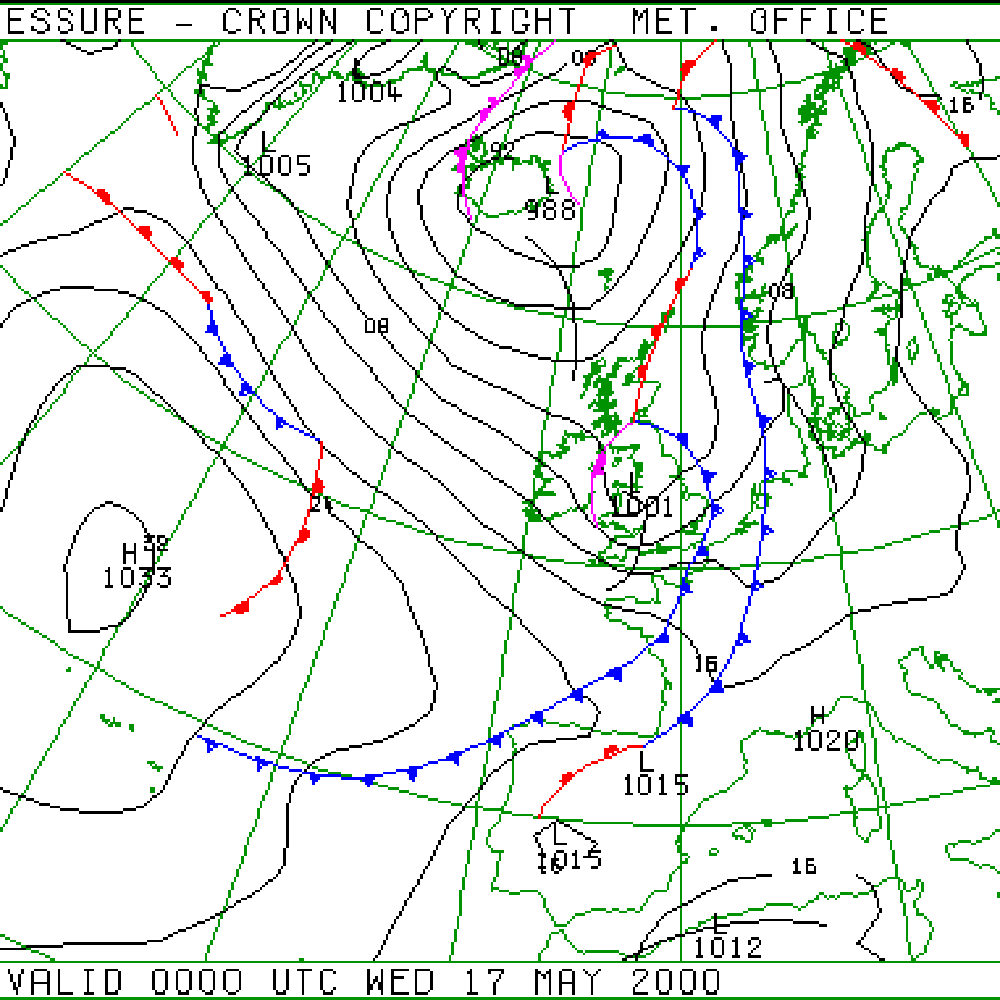
Ensuring the right sail plan is set and in good time is essential when facing heavy weather. It must be small, close to the boat’s center, and robust. The loads on a sail are enormous and increase exponentially as the wind rises. Even if your ultimate plan is to heave to and see it out, for those who have them, and anyone involved in offshore sailing must have them, it’s time to consider storm sails. These usually include a small, bright orange storm jib and a small, bright orange trysail. But do you need them, should you use them, and if so, when and how? In this latest PRO SERIES article by Rubicon 3, the offshore sailing experts, we look at the trysail. What it is, when to use it, and how.
What is a trysail?
A storm trysail is a small, very tough sail that can replace the mainsail and does not rely on the boom. For racing purposes, to qualify as a trysail, its dimensions must be less than 0.175 x P (luff length) x E (foot length), but for cruisers, such measurements are irrelevant. Its primary purpose is to provide enough power for steerage and control of the boat without overpowering the vessel. It also provides the all-important stability that a mainsail gives and reduces the otherwise inevitable rolling. They are made from heavy-duty sailcloths, usually a thick, densely woven fabric, like Dacron. The exact weight can vary, but it is generally 9 to 11 ounces per square yard or even heavier for larger vessels. They are reinforced at the luff, leach, clew, and tack and will have heavy-duty grommets, rings, or slides, ensuring they can be securely attached and adjusted under extreme conditions.
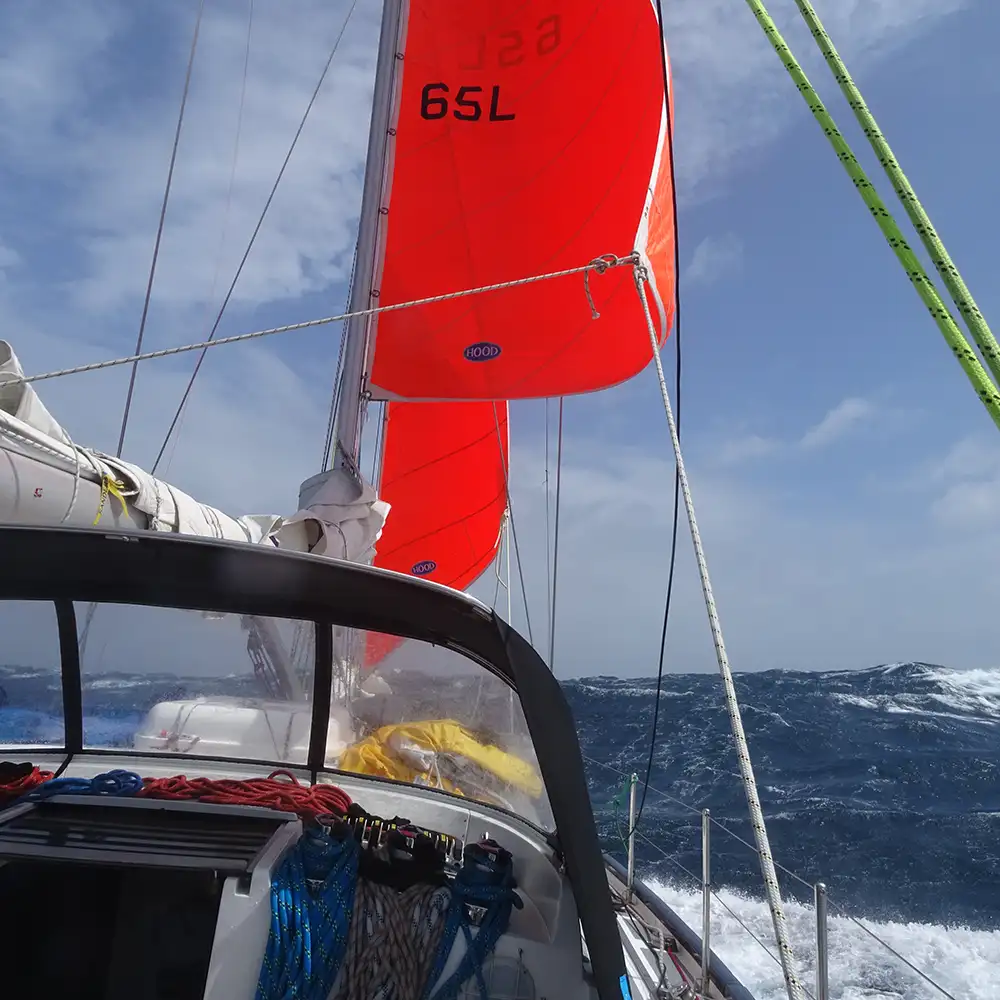
Storm sails need to keep the center of effort low down and close to the center. This causes issues for a trysail design, as it usually needs to sit above the mainsail stack, forcing it to be higher than one would like. This limits its height. To ensure adequate drive, it compensates by having a longer foot, giving it the shape of an elongated triangle. Such a sail will never give you excellent performance when close-hauled, but they will help make some ground to windward or heave to when facing a dangerous lee shore having run out of sea room or needing a rest. You can see the relative size of a main to a trysail in the following photo, seen on a Rubicon 3 Clipper 60.
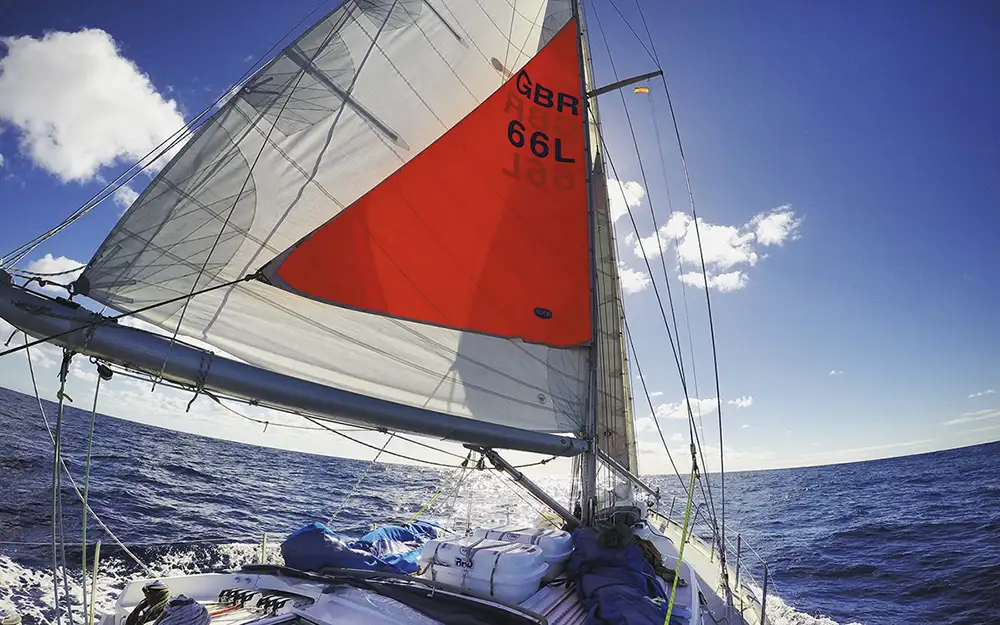
How to prepare a trysail
Most storm sails sit in the bottom of a damp locker and only get pulled out once a season at best, but most likely when it’s all gone wrong in bad weather, and they are needed in a hurry. Unless you run a well-maintained and disciplined yacht, this is where you may find the hanks have seized, the material has rotted, and the sheets are missing. We trust you are better organized, and before you leave the port, you know your trysail is in good and workable condition with the hanks well lubricated. Trying to rig any sail in heavy weather is a nightmare, but a mainsail or trysail is especially so due to the height at which it sits and the height of the gate on the mast track. It is dangerous, as the canvas will be slapping back and forth, the sheets will be like steel whips, and there is a simple danger of falling overboard. So have your trysail ready loaded on its own track, then lashed along the boom or bricked at the bottom of the mast.
How to fly a trysail
Most cruising yachts will only have one track, meaning that the mainsail must be pulled out before feeding the trysail luff into it. Properly outfitted bluewater yachts will have a separate track into which the trysail can be mounted irrespective of the mainsail. New yachts, however, with slimmer mast profiles often don’t have room for an extra track. As it is around the size of a third reef or even a fourth reef, it is a quick job to hoist it so long as the wind is not forcing it into the rigging. Dedicated sheets will run from its clew usually to the aft quarters of the yacht, before coming back on blocks to a winch. Exactly how to rig one is boat-specific, and you must try it before you need it in anger. (top tip – when you’ve worked it out, write it down and laminate it because you will need to remember when the time comes). Once deployed, you can sail much as you would with any loose-footed sail, which means fore reaching upwind or sailing fairly happily downwind, albeit with small sails.
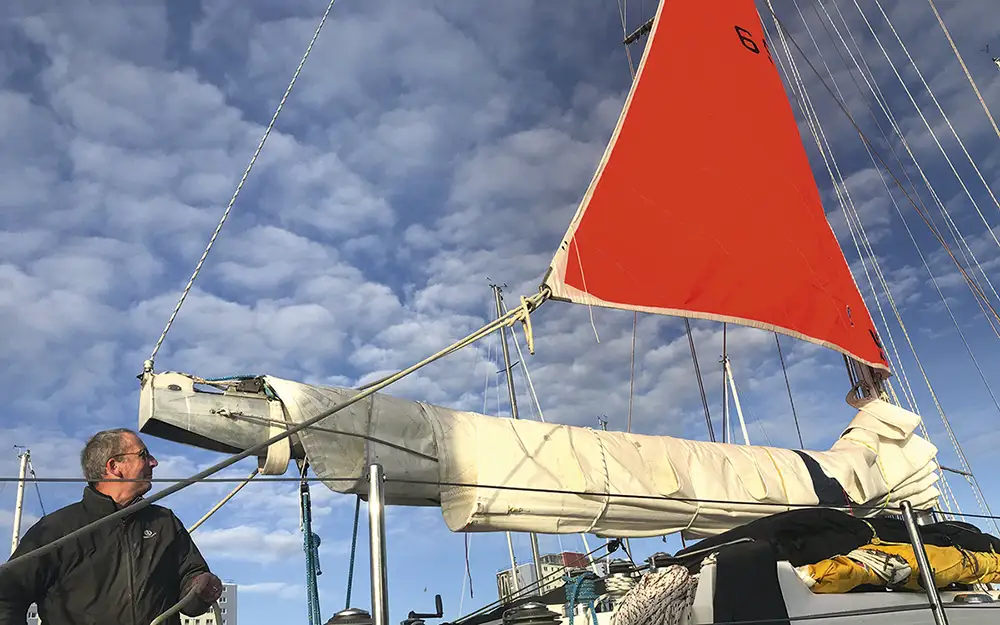
When to use a trysail
A trysail is an emergency-only sail for survival conditions. If the boom has broken, the mast is damaged, and the mainsail is not tenable, then a trysail will be a godsend. Similarly, if one has to construct a jury rig after demasting, it will be the right size and shape to give you a good chance. Besides that, you want to use a triple or quadruple-reefed main. Trysails are too hard and dangerous to launch in any meaningful wind strength, big waves, and a nasty sea state except in an emergency. A triple or quadruple-reefed mainsail will do precisely the same job, and so long as it is in decent condition, it will stand up to a tremendous amount of wind due to its small size.
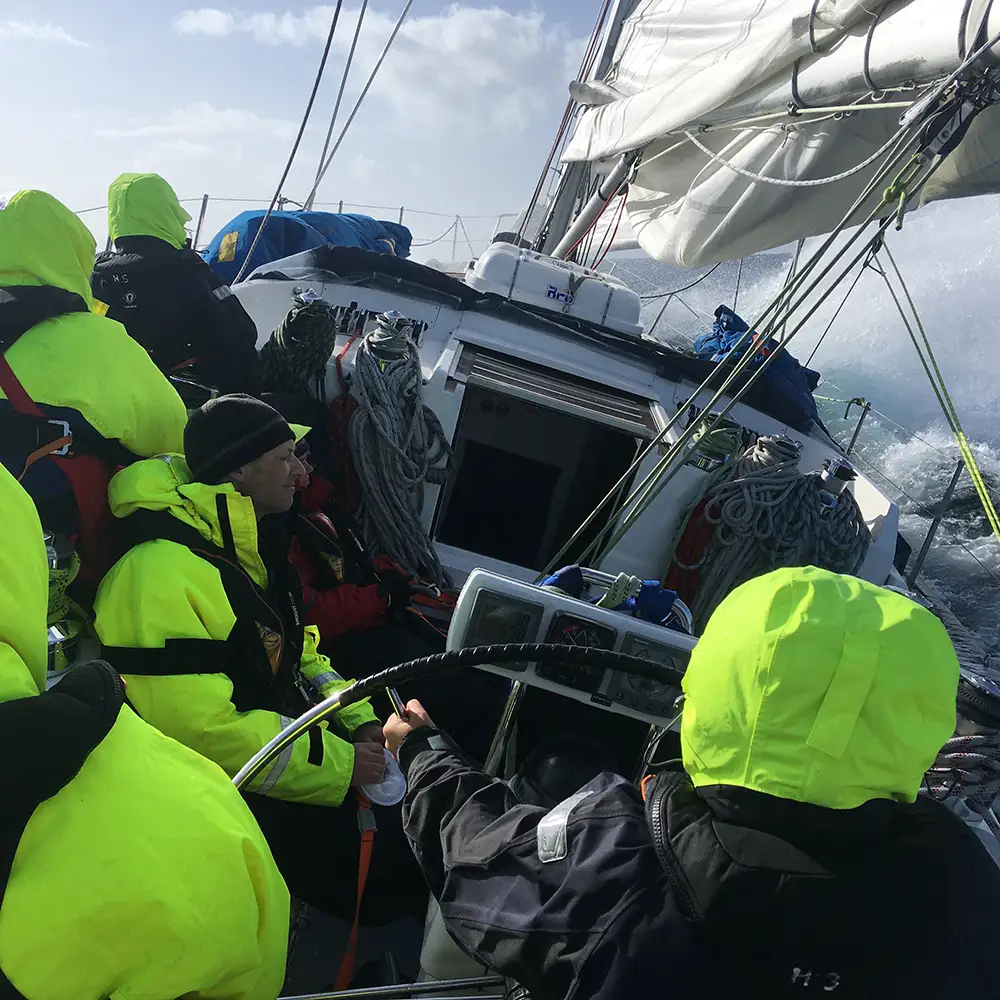
There are, however, times when you’ll see us using a trysail at Rubicon 3. First, when the mainsail gets damaged above the first or second reef, we want to protect it until we can get to shore and see a sailmaker. Having just crossed the continental shelf in Biscay, we had this exact scenario, and we sailed most happily onward to Spain. The second is on a long, deep-downwind passage that we know will have strong winds and rolly. Rather than worrying about the boom and gybes the whole time, it can be nice to set the trysail and relax. An accidental gybe is still no fun, but at least the danger of the boom swinging across the cockpit is gone. You may get a better angle than the main, which can be stopped going as wide as one would like by the spreaders and shrouds. If one has made landfall too early and wants to delay entry, a trysail also works very well when heaving to, allowing a rest or sleep before concluding your voyage.